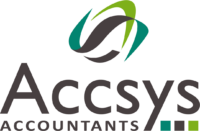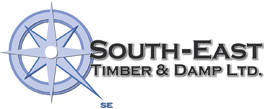
One of my clients, Annabelle from South East Timber and Damp, recommended the book Profit First by Mike Michalowicz (see link at the end).
I love a good business book and whenever I am recommended one, I will give it a go. I believe we are always learning and the moment you sit back on old knowledge, is the moment you have given up.
This book is all about managing cash and getting you to focus on understanding that the profit in your business is not the cash in your business. The two figures, while related, are not directly relatable at any given time.
The profit is the difference between the income and the costs of your business, but the cash is just how much of that profit you have collected at any given time.
If you are owed, or owe, a fair amount of money, then the cash in your bank is not necessarily all yours – it could be over or under inflated.
The book asked you to turn the traditional equation:
Sales minus Expenses = Profit
upside down to become:
Sales minus Profit = Expenses
This, according to the author, focuses the business owner on the profit, and taking your proportion of it first, rather than paying all the bills and paying yourself out of what is left.
This has a psychological effect because business owners will typically pay their overheads and then take whatever is left as their profit.
By putting away your profit first, and paying yourself first, the rest of the money is budgeted for expenses. If you can’t pay the overheads then they don’t get paid and you are spending too much, forcing you to think carefully about every spending decision. It encourages us to innovate by creating the same, or better, output with less resources.
Paying yourself first
The author says that most business owners forget to pay, or underpay, themselves. He advocates for setting up different bank accounts to physically shift your cash so that you can get a clear indication of what is profit, what must be spent, and what is your own pay.
Here is how you do it:
- Set up your Bank Accounts
The basic bank accounts are:
- Income
- Profit
- Owners Comp
- Tax
- Operating Expenditure
All sales income should go to the income account and then transfers are made between accounts at a pre-determined %. (Target Allocation Percentages (TAP))
- Determine your TAP
The amounts you put into each account are guided by a lookup table based on your revenue. The lookup table is available on the website accompanying the book. Book Resources find the “Instant Assessment” download and see FIGURE 1 on Page 2.
Warning: the table is based on the USA tax system. Your percentages may vary depending on tax jurisdiction.
- Transfer the cash
Every fortnight, transfer the £ value of each heading into each respective bank accounts. This is your cash budget for the period.
It’s important to be disciplined with your spending from each account, otherwise it defeats the purpose and you’ve just created a lot of admin with no benefit.
The key will be to only use the Operating Expenditure bank account to pay the overheads of the business and if there isn’t enough in that bank account after you have transferred the cash into the other accounts, then your overheads are too high.
Does this work in practice?
I must admit I don’t use the system because I have a very good cash forecast that identifies what cash I have in my account.
However, here is what Annabelle has to say about it:
We all remember those “aha” light bulb moments in business. One of my biggest in 15 years of running a company was listening on audible to “Profit First” in October 2019. It blew my mind, made complete sense, and has revolutionised my business.
I implemented the system immediately, set up additional bank accounts, added them to my online account and started moving money around. Every month I apply the allocation “%” that I have set for my business and move the money across into the (1) PROFIT/SAVINGS (2) TAX (3) OWNERS ACCOUNT and (4) OVERHEAD EXPENSES account. I monitor spending TIGHTLY and know EXACTLY what my limit is per month and this allows me to persistently look to reduce costs to match our allocation to the correct %.
In short, for many years we had been “overspending” by £96k a year on overheads/expenses which then meant the other accounts were short. My wonderful accountants had told me that I needed to reduce costs, I had tried, however Profit First showed me EXACTLY by how much I needed to cut. It was a very scary time for us.
The benefits of Profit First are that I now have my corporation tax already saved to pay later this year, have implemented a profit share to our “A” players, we the owners for the first time get a decent income! and the company has savings which got us through the tough COVID times.
I would highly recommend ANY business owner reads this book, tweaks it to fit their own business and apply it to their own numbers to keep you on track and to ensure you make a PROFIT!
In summary
I do see slight potential problems in the system. For example, ensuring the TAP percentages are reasonable and achievable; it may take a while to get your TAP percentages right.
I do think it is a good tool if you struggle to manage cashflow. If this is the case, then saving a percentage away for tax is something that I have always recommended, so this is that advice but magnified.
The Profit First system does not replace the need for accounting. It does not necessarily help you to understand financial performance and the levers you can pull to improve. It’s purely for cashflow management. That said Cash is King so anything you can do to make sure cash is there to keep the business going is good in my book.
Get the Book from Amazon here: Profit First by Mike Michalowicz








